#x-yutyrannus
Text
I haven't done an Ark update in a long time. Nothing much just more taming and breeding. Playing has been slow since creatures where not spawining in for a while(had to dinowipe a few times to get them back in)
Finally got that 5th health mutation in my sloths getting ready for the Broodmommy. Did the fjordur labirinth cave (never again until I get a tek suit. You can't grapple and I suck at jumps. Or I may just creative mode it if I have to get in there again).
I got thylas! And really love them.
Killed that Titan that was roaming Asgard. had to get a pic with it.
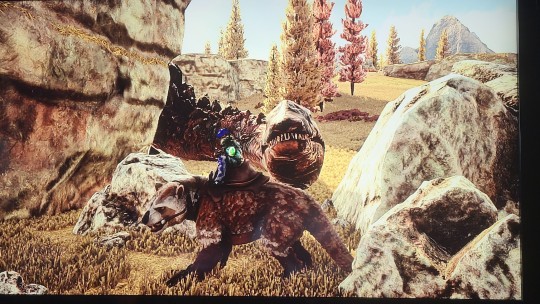
Here Me and my imprinted R-Thyla Margaret!.
Also went to Jotunheim, was scared for the cold but my mostly prim fur armor (except a mastercraft helmet) and a high meelee otter was enough! Tamed some things and took some pics there


I got a beautifully colored X-Yuty
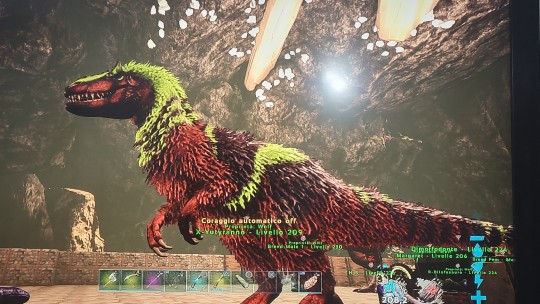

These are his colors if anyone wants them. Color IDs for survival evolved!
70: Dark Magenta (Amaranth purple -hex #b70042)
31: Dino Dark Purple (English Violet hex #403459)
83: Lemon Lime (Green Yellow hex #a8ff44)
1: Red (Red hex #ff0000)
89: Dark Lavender (Palatinate hex #5e275f)
Also.



Sheep
#ark#ark survival evolved#ark se#ark fjordur#ark jotunheim#giw plays ark#falborg the argentavis#margaret the R-thyla#argentavis#thylacoleo#ark argentavis#ark thylacoleo#thyla#ark r-thylacoleo#Tux the x-yuty#ark yutyrannus#yutyrannus#x-yutyrannus#ovis#i'm officially on day 100 in this world
3 notes
·
View notes
Text
youtube
Breeding X-Yutyrannus on Fjordur is important to have a strong army against the bosses in Ark: Survival Evolved!
#ark#ark survival evolved#arksurvivalevolved#x-yutyrannus#yutyrannus#fjordur#ark breeding#let's play#gaming#gameplay#Youtube
1 note
·
View note
Text
Yudon (Yutyrannus x Troodon hybrid) from Jurassic World: The Game

Made for a person from VK
#yudon#yutyrannus#troodon#hybrid#jurrasic world#jurassic world the game#dinosaur#dino#paleoart#oc#not my oc#digital art#prehistoric#paleo art#Kazarka
12 notes
·
View notes
Text
bisonte americano x yutyrannus huali

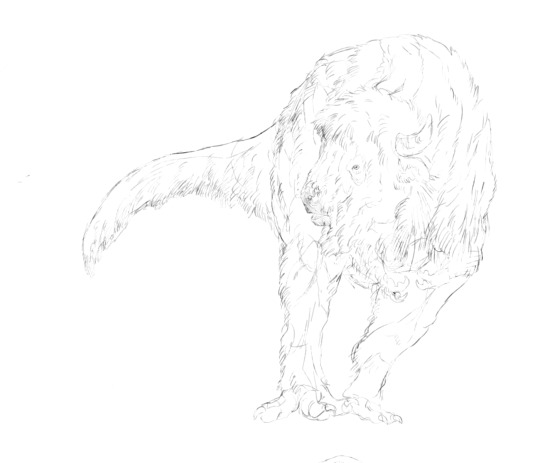
#character design#creature#creature design#paleoart#yuturannus#bison#paleontology#theropod#animal doodles
8 notes
·
View notes
Text
Yutyrannus huali
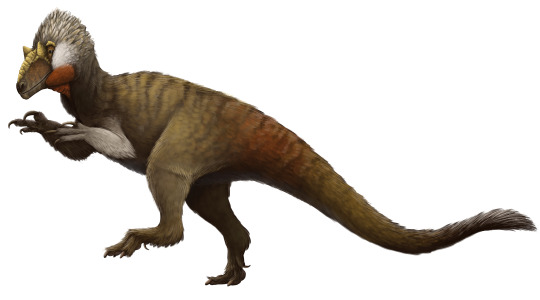
By Scott Reid
Etymology: Feathered Tyrant
First Described By: Xu et al., 2012
Classification: Dinosauromorpha, Dinosauriformes, Dracohors, Dinosauria, Saurischia, Eusaurischia, Theropoda, Neotheropoda, Averostra, Tetanurae, Orionides, Avetheropoda, Coelurosauria, Tyrannoraptora, Tyrannosauroidea, Proceratosauridae
Status: Extinct
Time and Place: Sometime between 129 and 122 million years ago, from the Barremian to the Aptian ages of the Early Cretaceous
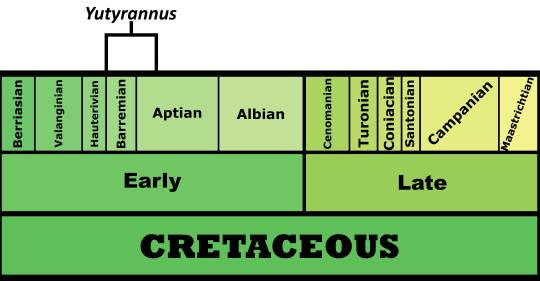
Yutyrannus is known from an unspecified member of the Yixian Formation in Liaoning, China

Physical Description: Yutyrannus is one of those dinosaurs that probably wasn’t much to look at, in terms of extraordinary appearance, at the time it lived - but to us, it is one of the most fascinating and exciting dinosaurs ever found. It was a large predator, around 9 meters long and weighing a little over one tonne. It had a long snout like other Tyrannosaurs, with a high crest in the middle of the snout that makes it distinct from other Tyrannosaurs. It also had extremely hollowed out openings in its head, giving it a lighter weight skull. It had a very flat tongue, like a crocodile, that was also fairly fixed as opposed to living birds. It had short arms, with three fingers on each hand (unlike the Tyrannosaurids, which would have two), and long, powerfully muscular legs connected to a similarly muscular tail. Of course, the most interesting fact about Yutyrannus was its feathers. Yutyrannus was covered in long (as long as 20 centimeters), shaggy feathers, covering nearly all over the body of the dinosaur. This makes Yutyrannus one of the largest animals known with direct evidence of feathers. If scales were present on this fluffer-nutter, we aren’t actually sure where!
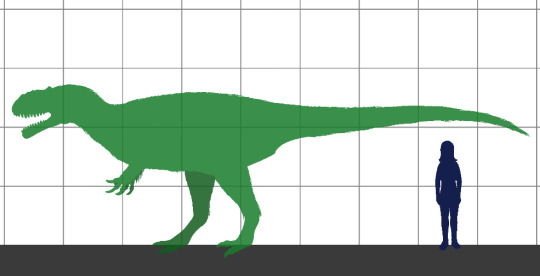
By Conty, CC BY-SA 3.0
Diet: As a Tyrannosaur, Yutyrannus would have fed primarily on other dinosaurs and animals smaller than itself.
Behavior: Yutyrannus was an extremely common animal in its habitat, which strongly suggests that it was at least somewhat social, possibly even a pack hunter. In fact, we have enough specimens of this animal to know that, as it grew, the lower legs, feet, pelvis, and arms grew smaller relative to its body; and the skull grew more robust and deep compared to the rest of the body. As a dinosaur, Yutyrannus would have taken care of its young; the fact that it was potentially social makes the likelihood of it doing so even larger. As for the feathers, it is more likely than not that Yutyrannus evolved these structures for the cold climate it lived in - it was, on average, only 10 degrees Celsius in the Yixian, which would have necessitated fluffy covering for maintaining body warmth. This also would explain why later Tyrannosaurids lost most of their feathers, as the climate of their habitat grew warmer. It is, however, possible that Yutyrannus also used at least some aspects of their feathers in social display - which is also the probable reason for the crest on the middle of its skull, which could have been colored differently or patterned in order to stand out to potential mates.
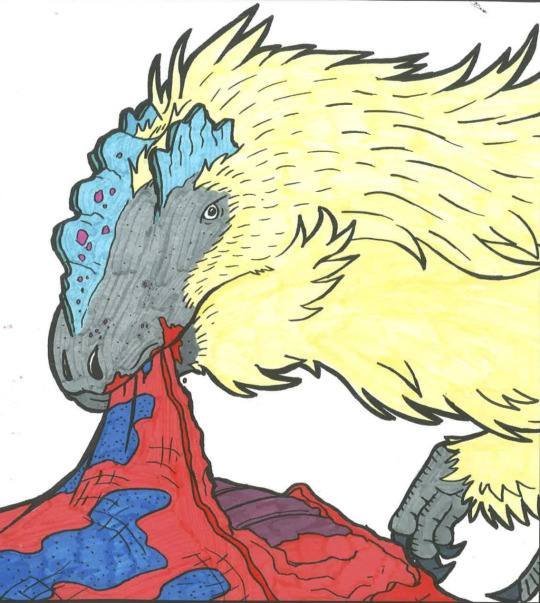
By Meig Dickson & Diane Remic
Ecosystem: Yutyrannus lived in the Yixian, a chilly coniferous forest marked with distinct seasonal changes and high levels of humidity, briefly broken up with notable dry seasons - in short, it was like modern-day Chicago, just with coniferous trees instead of deciduous ones (not least because deciduous trees, aka flowering trees, weren’t a very big deal yet). It would not be unsurprising if it had four distinct seasons - very wet springs, drier summers, dry autumns, and a return to humidity and wetness come winter. In fact, there is a nonzero chance that snow was a regular feature of the Yixian formation. There were a variety of flowering plants present along with ferns, horsetails, ginkgoes, cycads, seed ferns, and many others, leading to a variety of herbivores being present in this ecosystem. These forests surrounded a series of freshwater lakes with abundant minerals present, due to nearby volcanic reactions. Periodic disturbances due to these volcanic eruptions lead to very rapid animal turnover, and an extreme diversification - especially of fluffy dinosaurs - in the region.

By PaleoEquii, CC BY-SA 4.0
It is uncertain what sorts of dinosaurs actually lived with Yutyrannus, specifically because it is uncertain what part of the ecosystem Yutyrannus was found in. It is likely that it lived alongside the small early therizinosaur Jianchangosaurus, which would have been a major source of prey for Yutyrannus; it is also possible that it lived alongside the raptors Changyuraptor and Zhenyuanlong, which may have fed upon the babies of Yutyrannus. More research as to where in the ecosystem Yutyrannus hailed from will reveal more about its role in the food chain. It is possible, as shown above, that it may have hunted large sauropods such as Dongbeititan, provided it lived in the same region as them. Evidence of sauropod bones in the same location indicates that least some sort of sauropod was present as food for this dinosaur.

By Ripley Cook
Other: Yutyrannus was a Proceratosaurid, a group of early Tyrannosaurs which showcased interesting headgear, fluffy body covering, and what Tyrannosaurs were doing in the Early Cretaceous. Yutyrannus was one of the largest members of this group, and as such it is possible that it falls outside of the Proceratopsaurid group, as it has some features of the groups of Tyrannosaurs that would later evolve into the Tyrannosaurids. It is also entirely possible that Tyrannosaurids evolved from Proceratosaurids - and the traits of the group are just common to all early Tyrannosaurs.
~ By Meig Dickson
Sources Under the Cut
Amiot, R., X. Wang, Z. Zhou, X. X. Wang, E. Buffetaut, C. Lécuyer, Z. Ding, F. Fluteau, T. Hibino, N. Kusuhashi, J. Mo, V. Suteethorn, Y. Y. Wang, X. Xu, F. Zhang. 2011. Oxygen isotopes of East Asian dinosaurs reveal exceptionally cold Early Cretaceous climates. Proceedings of the National Academy of Sciences 108 (13): 5179 - 5183.
Brusatte, S.L. and Carr, T.D. 2016. The phylogeny and evolutionary history of tyrannosauroid dinosaurs. Scientific Reports, 6(20252).
Carr, T. D., D. J. Varricchio, J. C. Sedlmayr, E. M. Roberts, and J. R. Moore. 2017. A new tyrannosaur with evidence for anagenesis and crocodile-like facial sensory system. Scientific Reports 7:44942:1-11
Coria, R. A.; Currie, P. J. (2006). "A new carcharodontosaurid (Dinosauria, Theropoda) from the Upper Cretaceous of Argentina". Geodiversitas. 28 (1): 71–118.
Fu, Q., J. B. Diez, M. Pole, M. G. Ávila, Z.-J. Liu, H. Chu, Y. Hou, P. Yin, G.-Q. Zhang, K. Du, X. Wang. 2018. An unexpected noncarpellate epigynous flower from the Jurassic of China. eLife 2018 (7): e38827.
Li, Zhiheng; Zhou, Zhonghe; Clarke, Julia A. (2018). "Convergent evolution of a mobile bony tongue in flighted dinosaurs and pterosaurs". PLOS ONE. 13 (6): e0198078.
Meng, F. X., S. Gao, X. M. Liu. 2008. U-Pb Zircon Geochronology and Geochemistry of Volcanic Rocks of the Yixian Formation in the Lingyuan Area, Western Liaoning, China. Geological Bulletin of China 27: 364 - 373.
Mo, J., F. Zhou, G. Li, Z. Huang, and C. Cao. 2014. A new Carcharodontosauria (Theropoda) from the Early Cretaceous of Guangxi, Southern China. Acta Geologica Sinica 88(4):1051-1059
Switek, B. 2013. Palaeontology: The truth about T. rex. Nature News, 23 October 2013.
Wang, Y., S. Zheng, X. Yang, W. Zhang, Q. Ni. 2006. The biodiversity and palaeoclimate of confier floras from the Early Cretaceous deposits in western Liaoning, northeast China. International Symposium on Cretaceous Major Geological Events and Earth System: 56A.
Xing L., Bell, P.R., Currie, P.J., Shibata M., Tseng K. & Dong Z. (2012). "A sauropod rib with an embedded theropod tooth: direct evidence for feeding behaviour in the Jehol group, China." Lethaia, (advance online publication).
Xu, X., K. Wang, K. Zhang, Q. Ma, L. Xing, C. Sullivan, D. Hu, S. Cheng, and S. Wang. 2012. A gigantic feathered dinosaur from the Lower Cretaceous of China. Nature 484:92-95
Zhou, Z. 2006. Evolutionary Radiation of the Jehol Biota: Chronological and Ecological Perspectives. Geological Journal 41: 377 - 393.
#Yutyrannus huali#Yutyrannus#Dinosaur#Tyrannosaur#Feathered Dinosaurs#Feathered Dinosaur#Tyrannosauroid#Proceratosaurid#Factfile#Palaeoblr#Fluffy Friday#Theropod Thursday#Carnivore#Cretaceous#Eurasia#paleontology#prehistory#prehistoric life#dinosaurs#biology#a dinosaur a day#a-dinosaur-a-day#dinosaur of the day#dinosaur-of-the-day#science#nature
372 notes
·
View notes
Text
About Jurassic Park’s lack of feathers: (y’all this is long)
most dinosaur related media doesn’t have feathered dinosaurs and a lot of people blame Jurassic Park. dinosaurs are my special interest and Jurassic Park is a big part of that so ima prove them wrong. first off i wanna say haters get owned: 2011: NASA scientists said it was the 7th best SciFi movie and 2012: Popular Mechanics said it was the 6th accurate and “was faithful to early '90s speculative genetics theories”
anyways... lets get into it
Games (that i have lol):
Ark: Survival Evolved: 10/29 dinosaurs
Compsognathus, Deinonychus, Gallimimus, Megalosaurus, Microraptor, Oviraptor, Raptor, Therizinosaur, Troodon, Yutyrannus (this dino was actually found with direct evidence of feathers!)
at first i had no idea what type of ‘raptor’ they were referring to, but i checked and its a Utahraptor. the largest-known individual of Utahraptor was about 7 meters (23 feet) long so size is a-okay with me
i debated including the Pegomastax because the wiki says it has fur and quills, which could be argued as protofeathers, but since its from the early Jurassic its hard to say.. just to be safe i left it out
i only looked at dinosaurs cause there are a ton of made-up/mythical creatures, prehistoric birds/reptiles, and just a straight up vulture
The Isle: 3/30 dinosaurs
Therizinosaurus, Orodromeus (AI), Austroraptor
none of these are playable in survival mode btw
also i’m not sure if the game is going for accuracy or not, Dilophosaurus and Velociraptor are the right size but still... no feathers on known feathered dinos: Velo, Rex, or Utahraptor
technically feathers have never been found on Utahraptors but there is strong evidence that all dromaeosaurids had them since Microraptor and Dakotaraptor had them
Jurassic World Evolution: 0/69 (nice) dinosaurs
based on the movies Jurassic World, Fallen Kingdom, and eventually they added a Jurassic Park DLC. despite the Jurassic World movies not counting the Jurassic Park sequels (Lost World and JP3) as part of its time line, the Jurassic Park DLC includes skins from those movies. not much to say here... i’ll get into the movies further down
i didn’t count the pteranodon, cause its not a dinosaur and, still, no feathers
Saurian: 4/8 dinosaurs
Dakotaraptor, Tyrannosaurus Rex, Acheroraptor, Ornithomimid
i’ve only included the dinos that are currently in-game, the wiki says they are planing to add another playable dino, Anzu (feathered), but so far it hasn’t even been added as an AI yet
they are actually going for scientific accuracy so all the dinos that should have feathers do and they are, as far as i can tell, realistically placed. Good Job!
games are hard to talk about... usually games that feature dinos will have an element of ‘fantasy’ (Ark especially) and JWE is based on the Jurassic World movies so its dinos can only look like the movies dinos. The Isle is most likely suffering from the status quo, most dinos in popular media look like big lizards so they didn’t want to take a risk. the game isn’t finished and its possible it’ll go from a dinosaur sim to a shooter, since there are human models in game and controls for weapons. i’ve also heard players rumor that you’re not actually playing as the dino but as a camera that follows it around (which would explain the nigh vision mode). chances are The Isle will end up like Ark: man vs dino
Movies:
i thought about discussing The Land Before Time movies (cause i was obsessed with them as a kid lol), but that was pre-Jurassic Park so i’ll give it an honorable mention. ANYWAYS... Jurassic Park, Jurassic Park: Lost World, Jurassic Park 3, Jurassic World, and Jurassic World: Fallen Kingdom. none of them have feathered dinos. lets look at why that might be 🤔
Jurassic Park:
no feathered dinosaurs. BUT, feathered dinosaurs were not very mainstream in the scientific community until about 3 years after the movie came out,
“Three years after the first Jurassic Park debuted, paleontologists announced that the small theropod Sinosauropteryx was covered in a fine coat of fuzzy protofeathers. This was just the initial drop in a flood of feathery dinosaur discoveries which confirmed that a wide variety of dinosaurs bore archaic forms of plumage, from simple filaments to asymmetrical feathers that would have allowed them to fly.”
[from this National Geographic article (x)]
looking more into the history of feathered dinos, i found well... a lot. its really difficult to find a concrete time for when paleontologists discovered (and agreed on) feathered dinos, some places say 1860, 1923, 1979, 1983, it goes on forever, one source even said 2001. Archaeopteryx, which an early Jurassic creature, had complex, bird-like feathers. so why no feathers on other dinosaur reconstructions? its possible these discoveries were ignored by the larger scientific community in favor of the well established depictions of big, slow lizards
[if u wanna do even more reading about feathers check out this All About Birds article (x) and the History of discovery section on the Archaeopteryx’s wiki (x)]
JP definitely upped the Velociraptor’s size and did my Dilophosaurus dirty, so i will fault them for that. the big ass raptor has stayed in pop culture for-fucking-ever. it feels like everyone is making naked Utahraptors and calling them Velociraptors. and g*d... my poor Dilophosaurus... why’d they make you spit? and why so small? you’re really 6-7 meters (20-23 feet) long! you are a large carnivore!! also it is possible that Dilophosaurus had feathers, though again, because its from the early Jurassic, it would have been more like a fur
Lost World:
no feathered dinosaurs. i cant really fault them for not changing the dinosaurs looks in a sequel, also trust me when i say it could have been worse the dino depictions in the book are insane... Chameleon Carnotaurus anyone?
the movie also didn’t explain why there were different dinos at Site B compared to the actual park. my best explanation is from the book: Site B was where the dinosaurs were actually hatched and raised, they were moved to the park just before they got to big to handle. so we are to assume that any non-Jurassic Park dinos we saw in Lost World were originally planned to be moved. sucks that they left this detail out of the movie adaptation, cause a lot of fans got confused (including me lol)
Jurassic Park 3:
no feathered dinosaurs. an incredibly mild attempt at ‘feathered’ raptors was made in JP3 by giving the males quills, but at that point the movies had an established ‘science’ and completely changing the look of the animals at the end of a trilogy might have confused a few people (even if it was more scientifically accurate)
Jurassic World:
no feathered dinosaurs. they literally stated in the movie that they left out accurate feathered dinosaurs because Dr. Wu was asked to create: “Dinosaurs that look like what the public expects dinosaurs to look like. Scary. Scaly. Wild.” Dr. Wu also states that the dinosaurs have never been actual dinosaurs. their DNA is a melting pot of DNA.
(i swear i read something about Dr. Wu attempting to make feathered dinos, but because of all the non-dino DNA he couldn’t get the genes to stick, i can’t find a source or any proof of this so i guess that can be our lil headcanon lol)
though for a more real life reason,
“The reasoning behind this being continued through the subsequent movies, though, is more about how imposing the featherless versions look.” ... “It seems more likely that the filmmakers went with how most people would perceive dinosaurs in the hopes that dino experts would take notice.”
[from this Screen Rant article (x)]
so basically JW cared more about scary, recognizable dinos than accurate ones
Fallen Kingdom:
no feathered dinosaurs. again a sequel is a bit too late to change up your designs. unfortunately the change had to happen in JW or not at all
In Closing:
basically Jurassic Park came out just before paleontologists announced Sinosauropteryx, which popularized feathered dinos. even then Jurassic Park was restricted by the technology of the time. the early ninety’s was not the best time for CGI and i can’t imaging making feathered animatronic dinosaurs that could stand up to the rain they filmed in. new media is definitely stuck in the past, look at the movies that come out and compare how many are sequels or prequels or remakes or whatever. Jurassic Park was a great movie and obviously the vultures that make movies are gonna try and ride its brand into the sunset. blaming the movie for stopping new scientific discoveries from entering the mainstream isn’t fair. the movie did a lot to bring current science into the lime light, it popularized warmblooded, avian dinos and showed them as intelligent, fast moving animals instead of slow movie monsters
but JW had no excuse! they should get majority of the blame for making the public afraid of feathers cause they themselves were afraid of feathers! they had the technology, the budget, and the opportunity to follow in its parent movie’s footsteps. they could have at least TRIED to be accurate but they just stuck to what people knew cause that was more profitable. science is only as interesting as the toys you can make of it i guess...
a final note, just for my sanity: JP dinos aren’t real dinosaurs. not even in fiction. they’re DNA is so full of garbage that their inaccurate appearances could be explained away with that alone. the books get into this more, talking about all the failed embryos and how many diseases these creatures had. even delving into their lack of social skills and how the raptors didn’t act like a pack, but a group of aggressive individuals. unfortunately the average viewer isn’t gonna know about all this set dressing. hell, i didn’t even read the 2 books until recently (end of 2019/ start of 2020) so i was as ready to believe whatever the movies showed me. honestly the books and movies are all good in different ways, not accurate, but good. read the books if you want more gore and technical explanations and the movies if you want, well... more story, they add a lot of stuff that wasn’t in the books
one day i’ll get into the differences in the books and movies.. one day
[ this was originally a response to someone but tumblr hid it, cause links. so i’ve edited it to be a standalone post and also WAY longer. feel free to add on or correct any mistakes i’ve made (be respectful tho) ]
2 notes
·
View notes
Text
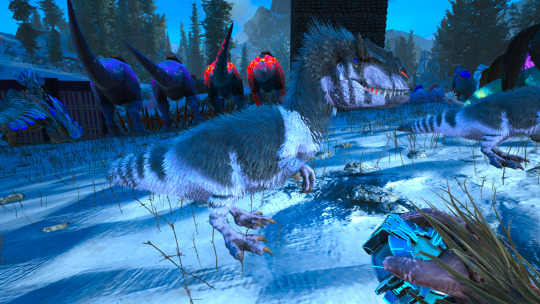
This was the X-Yutyrannus I was gonna use to start a boss X-Yuty line for the controller fight before my tribe mate bailed on the idea 🙄 probs still gonna breed for mutations bc X-Yuty are kinda cute
0 notes
Video
youtube
X-Yutyrannus are easy to tame, unless your mount is scared away!
#ark#ark survival evolved#arksurvivalevolved#playark#ark genesis#ark chronicles#x-yutyrannus#x-otter#let's play#gaming#gameplay#youtube
1 note
·
View note
Video
youtube
Tracking a Brute X-Yutyrannus with tiny footsteps!
#ark#ark survival evolved#arksurvivalevolved#playark#ark genesis#ark chronicles#ruffle some feathers#megatherium#let's play#gaming#gameplay#youtube
1 note
·
View note
Text
Jianchangosaurus yixianensis
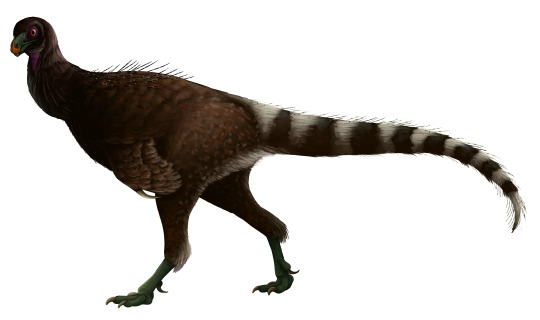
By Scott Reid
Etymology: Reptile from Jianchang
First Described By: Pu et al., 2013
Classification: Dinosauromorpha, Dinosauriformes, Dracohors, Dinosauria, Saurischia, Eusaurischia, Theropoda, Neotheropoda, Averostra, Tetanurae, Orionides, Avetheropoda, Coelurosauria, Tyrannoraptora, Maniraptoromorpha, Maniraptoriformes, Maniraptora, Therizinosauria
Status: Extinct
Time and Place: Sometime between 129.7 and 122.1 million years ago; most likely about 124.4 million years ago, in the Aptian age of the Early Cretaceous

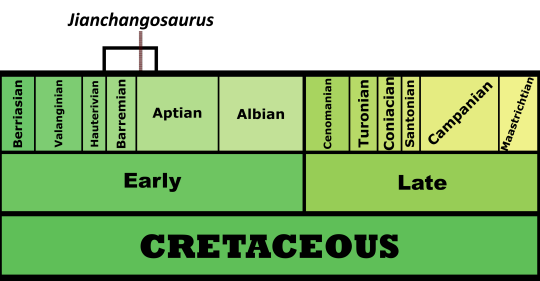
Jianchangosaurus is known from the Yixian Formation of Jianchang, China; it is uncertain which bed it was found in, but the Dawangzhangzi Bed seems most likely

Physical Description: Jianchangosaurus was a basal Therizinosaur, a group of birdie dinosaurs most notable for their long scythe-like hand claws and, somewhat more importantly, the fact that they evolved to be herbivorous, something that was once seen as unique for Theropod dinosaurs (we now know this happened multiple times - for example, Ornithomimosaurs were also herbivorous). Jianchangosaurus, being an early member of the group, helps to show how the Standard Theropod evolved into this weird group of dinosaurs.
Jianchangosaurus is known from a nearly complete skeleton. It would have been about 2 meters long and 1 meter tall, making it in general shorter than people, but not much so; it was also very lightly built. It had a long shin compared to its thigh, indicating that it was built for fast speeds and agility, which is not really a trait associated with more derived Therizinosaurs (which often feature a pot belly and weird upright gait, and thus, were rather slow moving animals). It did not sport the extra long claws of its later relatives, though it did have fairly thickened claws on its hands.
Jianchangosaurus is especially unique because of its jaw. It had a long and straight jaw, which supported large numbers of teeth that were very similar in shape to those of Ornithopods and Ceratopsians - two groups of herbivorous dinosaurs famed for their chewing ability. Jianchangosaurus also supported a beak at the end of its mouth, covered with a sheath of keratin. The front of the lower jaw is down-turned to aid in plucking off leaves. This indicates that herbivory evolved very early on in Therizinosaurs. In addition, this jaw was very resistant to high levels of stress, allowing it to exert more force when eating (having a higher bite force) and resist the strain of chewing on tougher vegetation. This would have given Jianchangosaurus more range in what it could eat in its ecosystem. In fact, the long length of the jaw and its downturned end gave Jianchangosaurus one of the highest ranges of bite force of any Therizinosaur.
Feather impressions of Jianchangosaurus are known, including wide, unbranched feathers that were probably used for display. Unfortunately, only the ends of these feathers are known, rather than the entire structure.
Diet: As an herbivore with a strong jaw, Jianchangosaurus was probably an opportunistic browser, feeding on whatever it could in its ecosystem in terms of plant material, including tough vegetation. It would have been restricted to a low browsing level due to its relative shortness. It may have also used its hands and claws to grab vegetation, but it did not show the sloth-like adaptations for such that is seen in later members of the Therizinosaur group.
Behavior: Jianchangosaurus would have been a fairly fast and skittish animal, living as it did in a very complex ecosystem filled with many animals, including the larger predatory Yutyrannus. As with many of the small, bipedal, fast herbivores of the Ornithopod group, it would have spent most of its time browsing around larger herbivores, and running away at the slightest sign of danger. Given the main fossil of this animal is a lone juvenile, it doesn’t seem likely that Jianchangosaurus would have lived in extensive groups, but that’s hard to say without more remains and more study. Still, if its feathers were primarily display structures, it’s possible that it would have had interesting sexual behavior, especially when it came to flapping proto-wings to impress mates.
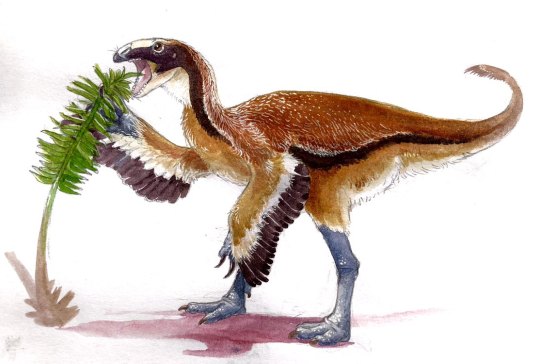
By Ripley Cook
Ecosystem: Jianchangosaurus is from the Yixian Formation, one of a few very well known and highly diverse fossil formations that showcase the evolution of birdie dinosaurs at the beginning of the Cretaceous Period. Many other dinosaurs are known from the region, but it’s difficult to tell what exactly would have been contemporaneous with Jianchangosaurus, given we don’t know exactly what level of the formation it’s from. The general environment of the formation was a coniferous, temperate forest, marked with seasonal changes and high humidity, interspersed with notable dry seasons. There would have been fairly cold winters as well, and potentially even snow. Primitive flowering plants were also present in the region (though not the first ones as once thought; turns out flowers evolved in the Early Jurassic. The more you know!), along with ferns, horsetails, ginkgoes, cycads, seed ferns, and many other types of plants, giving Jianchangosaurus an extremely wide variety of food sources.
These forests were associated with a series of freshwater lakes with abundant minerals due to extensive volcanic eruptions. These eruptions, in addition to wildfires and poisonous gas from lake bottoms, lead to periodic turnover of the environment; this lead to the extremely rapid diversification of dinosaurs in the region.
Other dinosaurs from the same specific region as Jianchangosaurus include the dromaeosaur raptors Changyuraptor and Zhenyuanlong, which were probably from the same general environment as Jianchangosaurus. Neither were big enough to eat Jianchangosaurus, however, and would probably have been more likely to eat their young. Yutyrannus, the medium-sized feathered Tyrannosaur, on the other hand, probably would have been the main predator of Jianchangosaurus. Other than that, it is impossible to know what sorts of dinosaurs Jianchangosaurus would have encountered, without a definite determination of what bed in the formation it is from.
Other: Jianchangosaurus is known from one fossil on a slab that shows unfused bones; this indicates that the individual was a juvenile, though without more fossils we do not know if its body shape would have changed much as it aged.
~ By Meig Dickson
Sources under the cut
Amiot, R., X. Wang, Z. Zhou, X. X. Wang, E. Buffetaut, C. Lécuyer, Z. Ding, F. Fluteau, T. Hibino, N. Kusuhashi, J. Mo, V. Suteethorn, Y. Y. Wang, X. Xu, F. Zhang. 2011. Oxygen isotopes of East Asian dinosaurs reveal exceptionally cold Early Cretaceous climates. Proceedings of the National Academy of Sciences 108 (13): 5179 - 5183.
Coombs, W. P. 1978. Theoretical aspects of cursorial adaptations in dinosaurs. The Quarterly Review of Biology 53: 393 - 418.
Fu, Q., J. B. Diez, M. Pole, M. G. Ávila, Z.-J. Liu, H. Chu, Y. Hou, P. Yin, G.-Q. Zhang, K. Du, X. Wang. 2018. An unexpected noncarpellate epigynous flower from the Jurassic of China. eLife 2018 (7): e38827.
Lautenschlager, S. 2017. Functional Niche Partitioning in Therizinosauria Provides New Insights into the Evolution of Theropod Herbivory. Palaeontology 60 (3): 375 - 387.
Meng, F. X., S. Gao, X. M. Liu. 2008. U-Pb Zircon Geochronology and Geochemistry of Volcanic Rocks of the Yixian Formation in the Lingyuan Area, Western Liaoning, China. Geological Bulletin of China 27: 364 - 373.
Pu, H., Y. Kobayashi, J. Lu, Y. Wu, H. Chang, J. Zhang, and S. Jia. 2013. An unusual basal therizinosaur with an ornithischian dental arrangement from northeastern China. PLoS ONE 8(5):e63423
Wang, Y., S. Zheng, X. Yang, W. Zhang, Q. Ni. 2006. The biodiversity and palaeoclimate of confier floras from the Early Cretaceous deposits in western Liaoning, northeast China. International Symposium on Cretaceous Major Geological Events and Earth System: 56A.
Zhou, Z. 2006. Evolutionary Radiation of the Jehol Biota: Chronological and Ecological Perspectives. Geological Journal 41: 377 - 393.
#jianchangosaurus#dinosaur#therizinosaur#palaeoblr#jehol biota#jianchangosaurus yixianensis#dinosaurs#maniraptoran#cretaceous#herbivore#eurasia#theropod thursday#factfile#paleontology#prehistory#prehistoric life#biology#a dinosaur a day#a-dinosaur-a-day#dinosaur of the day#dinosaur-of-the-day#science#nature
227 notes
·
View notes